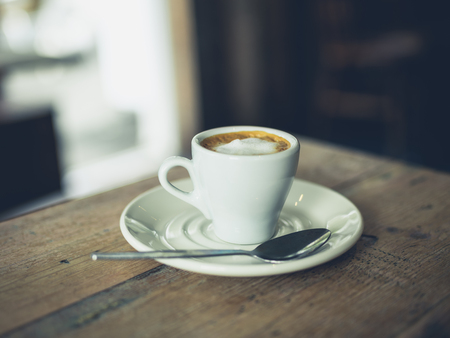A Glimpse into Milanese Coffee Culture
Step into the heart of Milan and you’ll discover a city where coffee is more than just a morning ritual—it’s a way of life. In the bustling cafés lining Via Montenapoleone or tucked away in quiet piazzas, locals gather to savour their daily caffè latte, blending tradition with unmistakable Italian flair. Here, the act of ordering a coffee becomes a celebration of taste and style, where every detail matters—from the lustrous crema on the espresso to the perfectly steamed milk. Milan’s café scene, renowned for its sophistication, is a reflection of the city itself: elegant, stylish, and steeped in history. It is within these hallowed walls that the caffè latte emerged as an enduring classic, cherished not only for its creamy texture but also for its ability to bring people together over simple pleasure. This timeless beverage captures the essence of Milanese culture—a harmonious blend of craft, community, and chic ambiance. As we trace the journey of the caffè latte from Milan to London, understanding its origins offers us a window into how tradition travels and evolves, shaping tastes and lifestyles far beyond Italy’s borders.
London’s Café Evolution: Embracing the Latte
If you wander through London’s iconic neighbourhoods, from the vibrant energy of Soho to the leafy avenues of Notting Hill, the presence of the caffè latte is as unmistakable as a red double-decker bus. Yet, this creamy Italian creation wasn’t always at home in the British capital. The journey of the latte from Milanese tradition to London staple is a tale of cultural curiosity and reinvention—a story reflected in every frothy cup served across the city.
In the early days, coffee in London was largely associated with strong black brews or genteel afternoon teas. However, as travel and cosmopolitan tastes flourished in the late 20th century, Londoners developed an appetite for continental flavours. Enter the Italian caffè latte: smooth, milky, and perfectly suited to the city’s penchant for leisurely brunches and on-the-go morning rituals alike.
Londoners didn’t just copy; they adapted. On bustling street corners, independent cafés began crafting lattes with a distinctly British twist—sometimes using locally sourced milk or experimenting with alternative dairy options to cater to modern sensibilities. Meanwhile, established tearooms embraced the trend by offering lattes alongside traditional English breakfasts, bridging old-world charm with new-wave style.
Here’s a quick look at how key London settings gave their own flavour to the classic Italian latte:
| Location | Signature Latte Twist |
|---|---|
| High Street Cafés | Takeaway lattes in recyclable cups, often with creative seasonal flavours |
| Tearooms | Lattes served alongside scones and pastries for an elevated experience |
| Artisan Coffee Shops | Locally roasted beans and artistic latte art to satisfy both taste and aesthetics |
| Markets & Food Halls | Vegan-friendly versions featuring oat or almond milk for health-conscious crowds |
The caffè latte has become more than a beverage—it’s woven into the fabric of daily life, adapting seamlessly to British rhythms while retaining its Italian soul. Whether sipped slowly over a newspaper or grabbed en route to work, it captures London’s love affair with global trends and local flair.

3. The Essentials: Ingredients and Equipment
If you’re truly set on mastering the art of the traditional caffè latte—whether you find yourself nestled in a sunlit Milanese piazza or tucked away in a chic Marylebone café—the secret begins with impeccable ingredients and reliable tools. Let’s break down what you’ll need to craft that perfect cup, worthy of both Italian purists and discerning Londoners alike.
Espresso Beans: The Heart of It All
No proper caffè latte can begin without quality espresso. In Milan, baristas swear by freshly roasted Arabica beans, boasting notes of chocolate, caramel, or even a hint of citrus. For Londoners seeking authenticity, look for local roasters who source directly from small farms; the result is a complex, aromatic shot that forms the backbone of your latte. Remember: freshness is everything. Invest in whole beans and grind them just before brewing—your taste buds will thank you.
The Right Milk: Creamy & Smooth
Milk is no mere supporting act in this performance; it’s centre stage alongside the espresso. Italians favour full-fat milk for its rich texture and natural sweetness, but British dairies offer equally superb options—think creamy Jersey or Guernsey milk. If you prefer a plant-based twist, opt for barista-style oat or almond milks which steam beautifully and lend a subtle nuttiness. Whichever you choose, ensure it’s well-chilled before frothing for that signature silky microfoam.
Equipment: Tools of the Trade
A classic espresso machine is non-negotiable—ideally one with a powerful steam wand for velvety milk. But don’t fret if your London flat or Milan apartment is lacking space; compact home machines can still deliver impressive results. You’ll also want a stainless-steel milk jug (with a pointed spout for precise pouring), a burr grinder for even coffee grounds, and if you’re feeling adventurous, a thermometer to achieve the perfect 65°C froth every time.
Don’t Forget the Details
Whether you’re perfecting your technique under Lombardy’s golden morning light or amidst London’s ever-changing skies, remember: great coffee is about balance and care. From bean to cup, every element matters—and with the right essentials at hand, your caffè latte will transport you straight from Milan to Marylebone with every sip.
4. Artistry in the Pour: Technique Meets Tradition
If the soul of a caffè latte resides in its rich espresso and creamy milk, then its spirit is truly revealed in the pour—a moment where Italian craftsmanship meets British flair. In Milan, baristas treat each cup as a canvas, their hands steady as they layer perfectly steamed milk over a robust shot of espresso. The British, known for their inventive touch and appreciation for ritual, have added their own creative spin to this classic, often infusing new textures and patterns that delight both Londoners and visiting Italians.
Temperature Nuances: A Balancing Act
The magic begins with temperature—a subtle yet vital detail. Traditional Italian lattes demand milk heated to around 65°C, striking that sweet spot where creaminess flourishes without scalding the delicate sugars within. In London’s speciality cafés, you might find baristas experimenting just a touch cooler or warmer, but always with precision to preserve both taste and texture.
Step |
Italian Approach |
London Twist |
|---|---|---|
| Milk Temperature | ~65°C (149°F) | 62–68°C (144–154°F) based on preference |
| Frothing Method | Silky microfoam, minimal bubbles | Microfoam with playful textures; oat and alternative milks embraced |
| Latte Art Style | Simplicity—hearts, rosettas | Bolder: swans, tulips, even seasonal motifs |
Mastery in Frothing: Crafting Microfoam Perfection
The artistry continues at the steam wand. True mastery lies in achieving a luxuriously smooth microfoam—never too frothy nor too flat. While Milanese tradition favours a gentle swirl and minimal aeration, London baristas often indulge in experimenting with non-dairy milks or infusing subtle flavours, all while maintaining that signature silkiness.
The Ritual of the Pour: Where Skill Becomes Performance
With every tilt of the jug and swirl of the wrist, pouring transforms into theatre. The Italian pour is deliberate and measured—aiming for balance between coffee and milk so every sip is harmonious. In London’s coffee houses, however, this ritual becomes performance art: intricate hearts, leaves, or even a cheeky Union Jack are poured with flourish and pride.
The Result: An Impressive Cup for Every Taste
This fusion of Italian technique and British creativity ensures that whether you’re perched at a café in Milan or tucked away in a cosy London nook, your caffè latte will be as much a feast for the eyes as it is for the palate—impressing even the most discerning locals from both sides of the Channel.
5. Sipping Style: Serving and Pairing
When it comes to enjoying a caffè latte, the Milanese have truly elevated the art of serving. Presentation is everything—think crisp white porcelain cups, saucers with a gentle curve, and a gleaming silver spoon placed just so. In Milan, your latte is often presented with a flourish, its silky microfoam topped with a delicate rosetta or heart, inviting you to savour both the aroma and the artistry.
For those wishing to recreate this at home in London—or anywhere across Britain—attention to detail is key. Warm your cup beforehand to keep the latte at its perfect temperature. Pour with care, allowing the espresso and steamed milk to mingle into a harmonious blend, then finish with a touch of creative latte art.
The Milanese also understand the beauty of pairing. Traditional accompaniments include a freshly baked cornetto or a sliver of almond biscotti—subtle enough not to overpower the coffee but indulgent enough to make each sip feel like a treat. For a British twist, consider serving your caffè latte alongside an elegant shortbread or an airy Victoria sponge, marrying Italian flair with classic English refinement.
Beyond taste, the setting matters. Whether you’re nestled in a Soho café or hosting friends in your own kitchen, create an atmosphere that feels both relaxed and refined. A linen napkin, soft lighting, perhaps even fresh flowers—these thoughtful touches transform an everyday ritual into a moment of pure pleasure.
In essence, mastering the art of the traditional caffè latte isn’t simply about technique—it’s about crafting an experience that celebrates both Milanese tradition and British elegance. So pour with intention, pair thoughtfully, and savour each sip as if you were seated between the bustling piazzas of Milan and the genteel tearooms of London.
6. Caffè Latte in the British Lifestyle
As the traditional Italian caffè latte journeyed from Milan’s elegant cafés to London’s cosmopolitan coffee bars, it has gracefully woven itself into the very fabric of British daily life. No longer just an Italian morning ritual, the caffè latte now enjoys a starring role in Britain’s social calendar—whether it’s served as a soothing companion during leisurely Sunday brunches or presented in sleek takeaway cups at bustling city meetings. The British have embraced this creamy classic with their own unique flair, making it synonymous with moments of pause and connection amid the everyday rush.
The Allure of Ritual
For many Brits, enjoying a caffè latte is less about the caffeine fix and more about the ritual itself. It’s become an invitation to slow down—a reason to linger over the weekend papers, share stories with friends in a sun-dappled café garden, or simply savour a few minutes of solitude before the day unfolds. This continental habit has been wholeheartedly adopted, merging seamlessly with beloved British traditions like elevenses or afternoon breaks.
From Boardrooms to Boutiques
In London’s chic workspaces and creative studios, the caffè latte signals sophistication and taste. Its presence at meetings is almost expected, symbolising not just productivity but also a sense of camaraderie and shared experience. From independent bookshops to high street boutiques, ordering a latte has become shorthand for good taste—a subtle nod to European style that fits perfectly alongside Britain’s appreciation for quality and comfort.
A Lasting Blend of Cultures
The story of the caffè latte in Britain is ultimately one of cultural exchange and adaptation. What began as an Italian staple has evolved into a British favourite—cherished for its warmth, its versatility, and its ability to bring people together. Whether enjoyed on a rainy morning commute or as part of a celebratory brunch spread, the caffè latte stands as a testament to how global tastes can enrich local lifestyles, transforming simple pleasures into enduring rituals.


